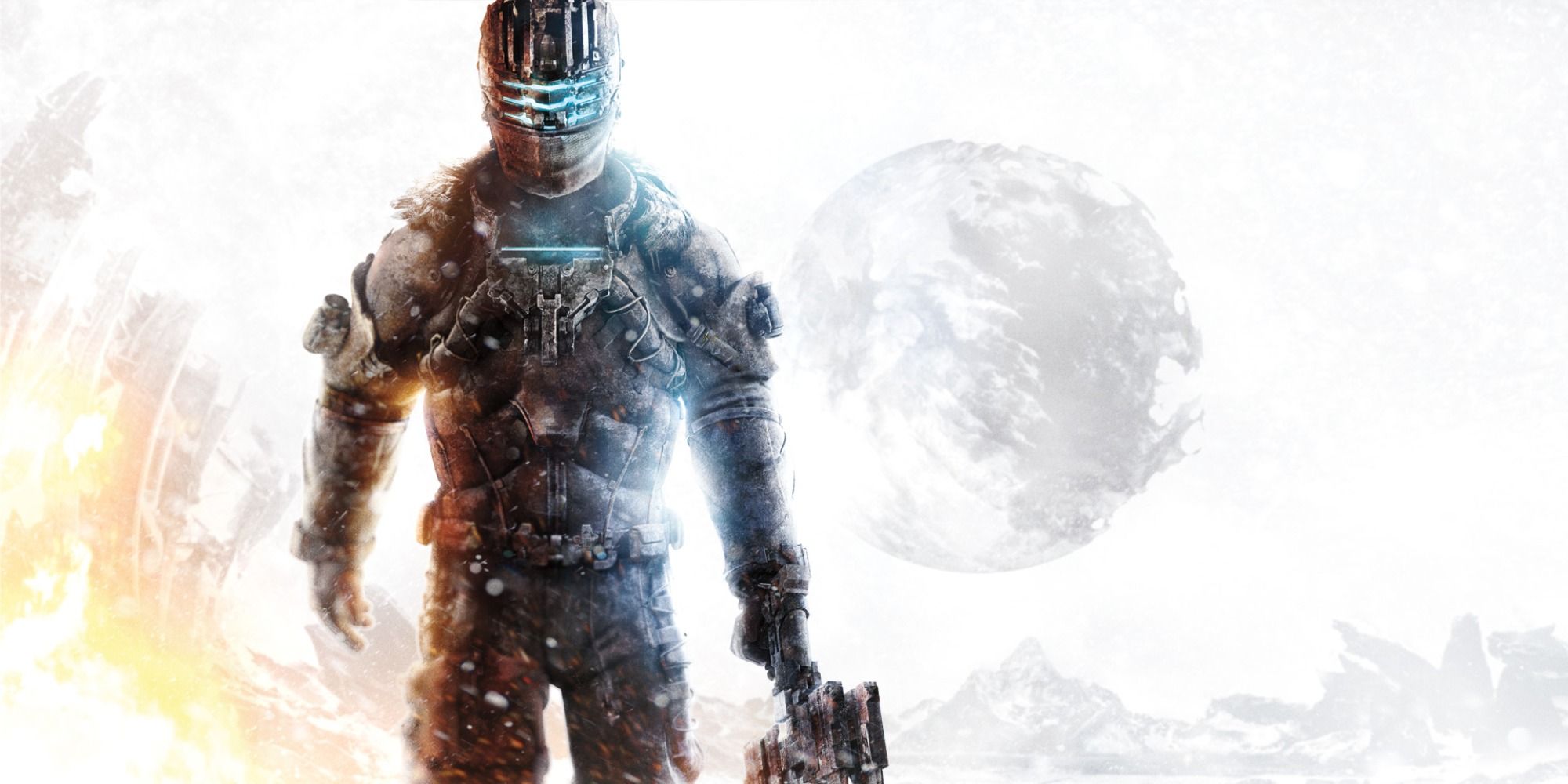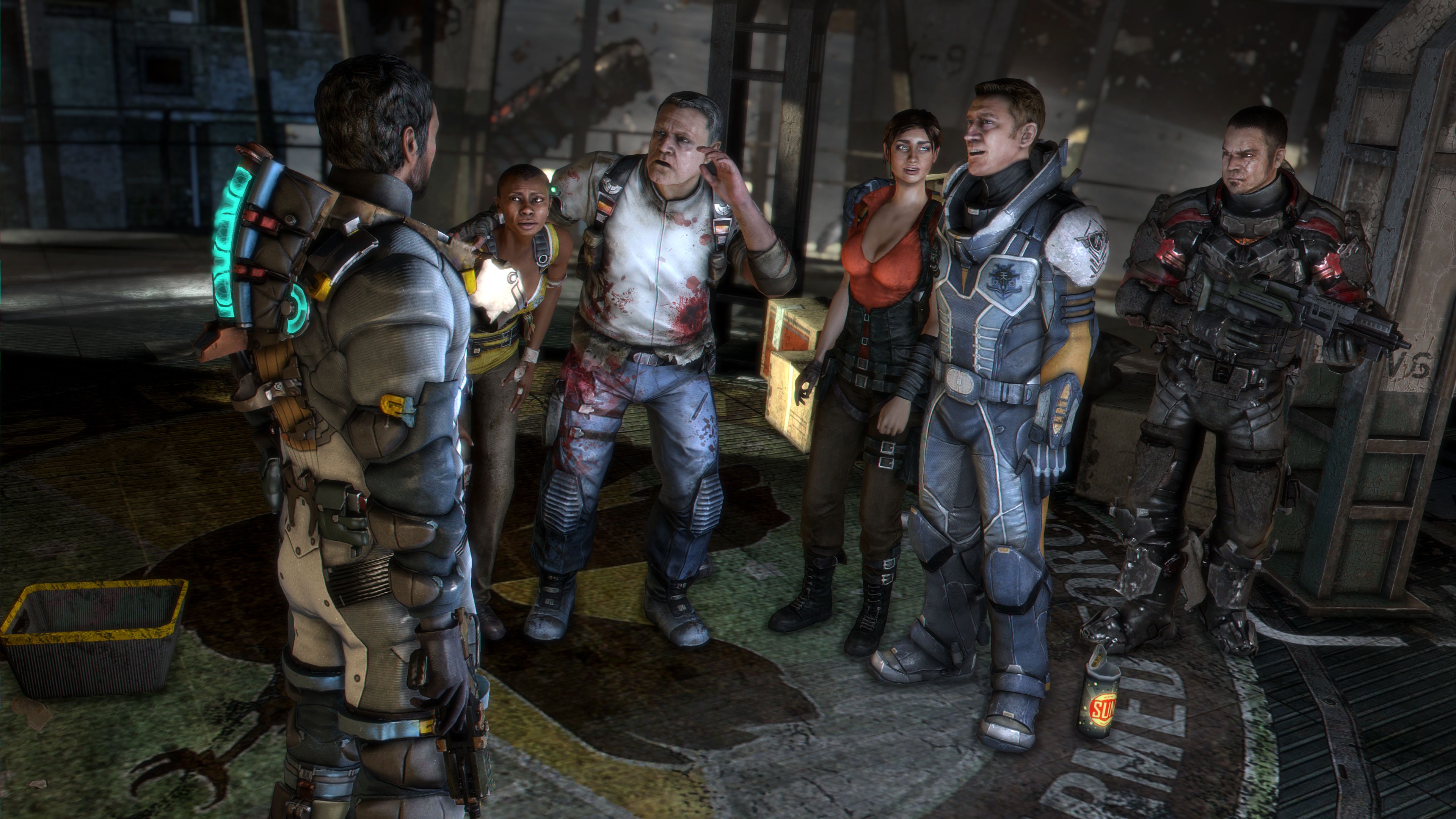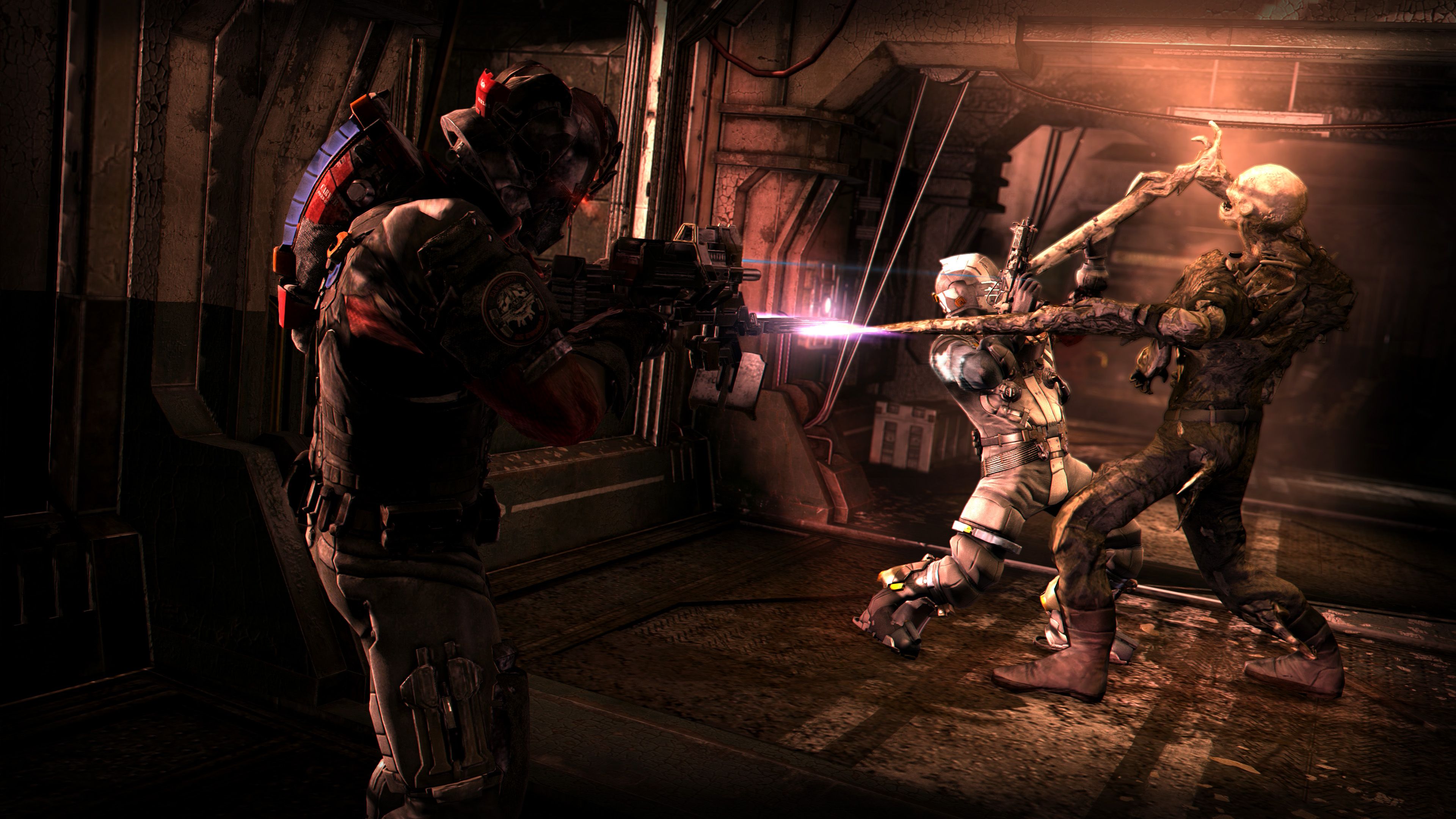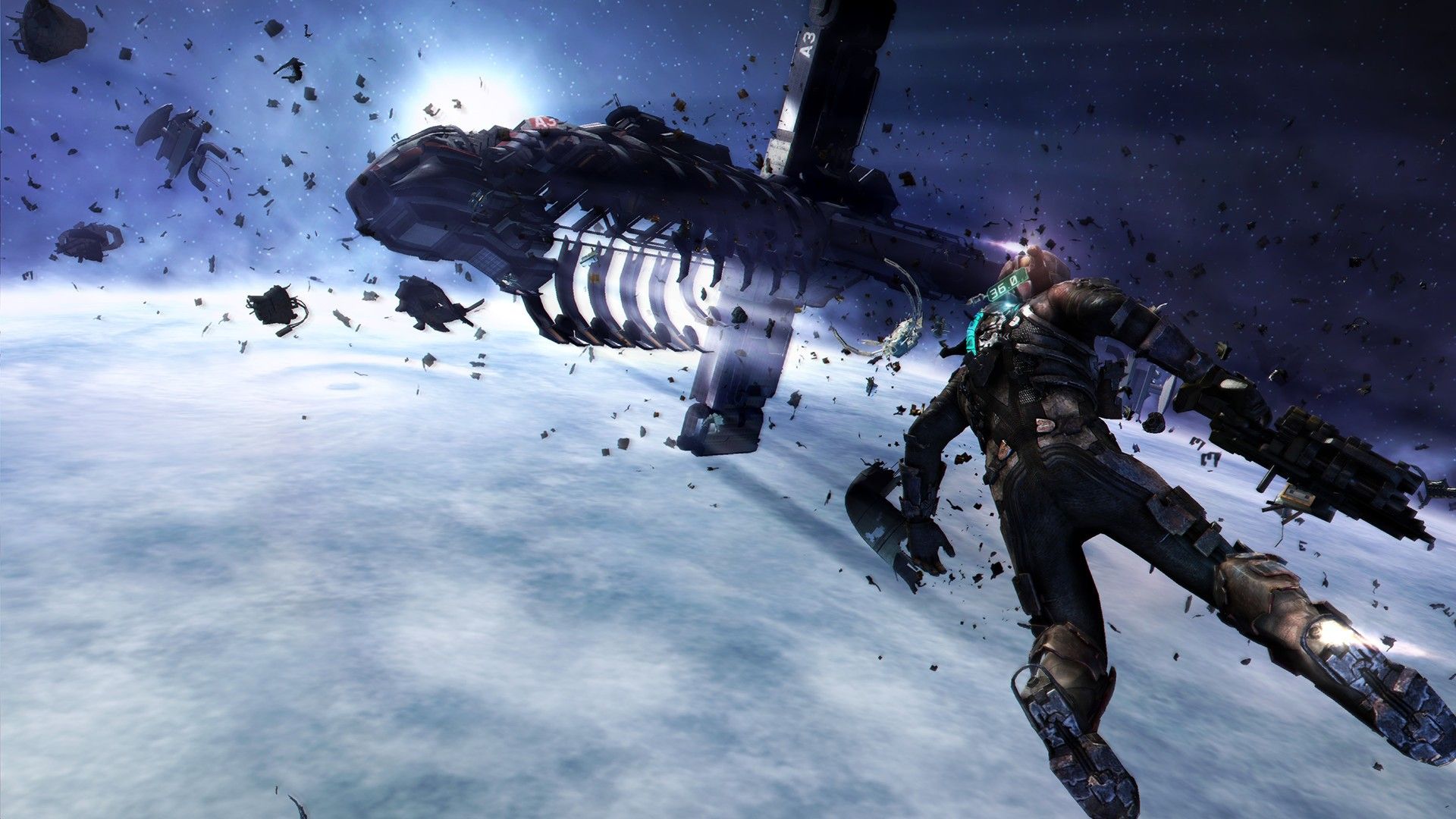Dead Space is apparently making a comeback, with EA seemingly cottoning onto the fact that we enjoy single-player games again after the huge success of Star Wars Jedi: Fallen Order. However, it might not be a direct continuation of Isaac Clarke’s original trilogy, opting instead to act as a reimagining of the first game enhanced with modern visuals and gameplay mechanics.
This is the right decision, mostly because Dead Space 3 wrote the series into a corner of laughable convolution and unusual character motivations it had no chance of escaping from. Once you turn an entire planet into a Necromorph, you can’t really venture much further without morphing into a camp parody of what you used to be.
The final chapter of Dead Space 3 is a polarizing one, leaving horror behind in favour of action, losing a large selection of fans as a consequence. It’s still a great game, but it’s far too constrained by trends of the time. As the property looks set to make a welcome return, I want to look back on why Dead Space 3 isn’t as bad as we remember. You can still hate it, but maybe don’t demonise those who tried their very best to make it work.
First launched in 2013, the writing was on the wall for Dead Space 3 long before its arrival. The first game was a harrowingly tense survival horror experience in the vein of Resident Evil or Silent Hill, tinged with an aesthetic that clearly tried to ape Event Horizon. It was both predictable in its inspiration and innovative in how it approached horror in gaming. Aside from System Shock 2 and a handful of other classics, modern creators had never thought to abandon us in space with a seemingly unstoppable threat before. We felt powerless, and trying our best to survive aboard the USG Ishimura has stood the test of time beautifully.
The latter two games haven’t aged as well, partly due to a greater emphasis on action and the bizarre decision to turn Isaac Clarke into a mopey spoken protagonist who struggled to stand out amidst a generation of similarly dull white male heroes. It’s still an excellent game, one ripe with high-octane set pieces and a creative approach to horror, yet it far too often relies on cliched archetypes and a predictable narrative that is far too obsessed with its own mythology. I don’t need the origin of the Necromorphs or the unwieldy religion behind them explained in boring moments of exposition, it isn’t necessary and only serves to drag down the pacing. Once I know the reasoning behind the aliens I’m fighting, they simply become grotesque beings waiting to be dispatched as opposed to creatures of the unknown who could be capable of anything. It’s a loss of mystique, one that the original game was so skilled at preserving. All these years later, it’s easy to see why so many fans walked away from where EA decided to take things, and I was right there with them.
Dead Space 3 doubled down on this trajectory, while folding in a number of hot new things at the time like microtransactions and obligatory online co-op. You could tackle the campaign alone or join up with a friend who took on the role of John Carver. He’s the horrendously boring foil to Isaac Clarke’s unwavering mission to stop the Necromorphs and even suffers from unusual hallucinations that enhance the campaign with a few extra slices of horror. But unless you’re playing online, you’ll miss all of these, and be worse off for it. Perhaps most bizarre is how Carver will randomly spawn into key cutscenes and story sequences like he has been with you the entire time, leaving many character moments and otherwise dramatic situations to feel strangely out of place. The act of playing the game in co-op was a blast, it just wasn’t really Dead Space. Instead, it felt like the Western equivalent to Resident Evil 6, yet another series from the era that traded in survival horror for action and suffered for it.
I know I just spent a solid paragraph ragging on Dead Space 3, and even missed out on it at launch because of the mixed critical reception. But I returned to it in recent months and was pleasantly surprised, and also fascinated by where it sat in the wider gaming landscape back in 2013. This is a game with a stunning single-player mode held down by a bunch of unnecessary baggage. The co-op doesn’t need to be there, a single generic type of ammo and a half-baked weapon customization system rob the entire thing of any tension, and the unfolding narrative is so silly and larger than life that it’s impossible to take seriously. So I didn’t, I switched my brain off and accepted that this game wasn’t going to be very scary, but then I’m convinced it really isn’t trying to be.
When I actively changed my perspective and approached Dead Space 3 with new eyes, I was oddly enraptured by it all. Isaac Clarke’s drive to survive is almost comedic, as are the endlessly violent situations he’s thrown into that would obliterate literally any other human being in the world. The return of Ellie Langford, his previous love interest, and a cringe-inducing love triangle between her, Isaac, and a character who is blatantly designed to be a massive wanker is also hilarious to watch unfold.
It’s a joy, mostly because of how melodramatic and nonsensical it all becomes as we inch closer to the credits. It feels like Visceral Games wasn’t able to craft the horror thriller it wanted to, so the studio went so far into the other direction that its fictional universe all but imploded upon itself. It’s a product of EA’s inflated ego, of focus groups, and of a series that doomed itself to an early end because it wanted to be so much more. I admire this ambition, as misplaced as it might be, and with Dead Space set to make a return, I think it’s okay to give its most maligned chapter a warmer welcome this time around.




